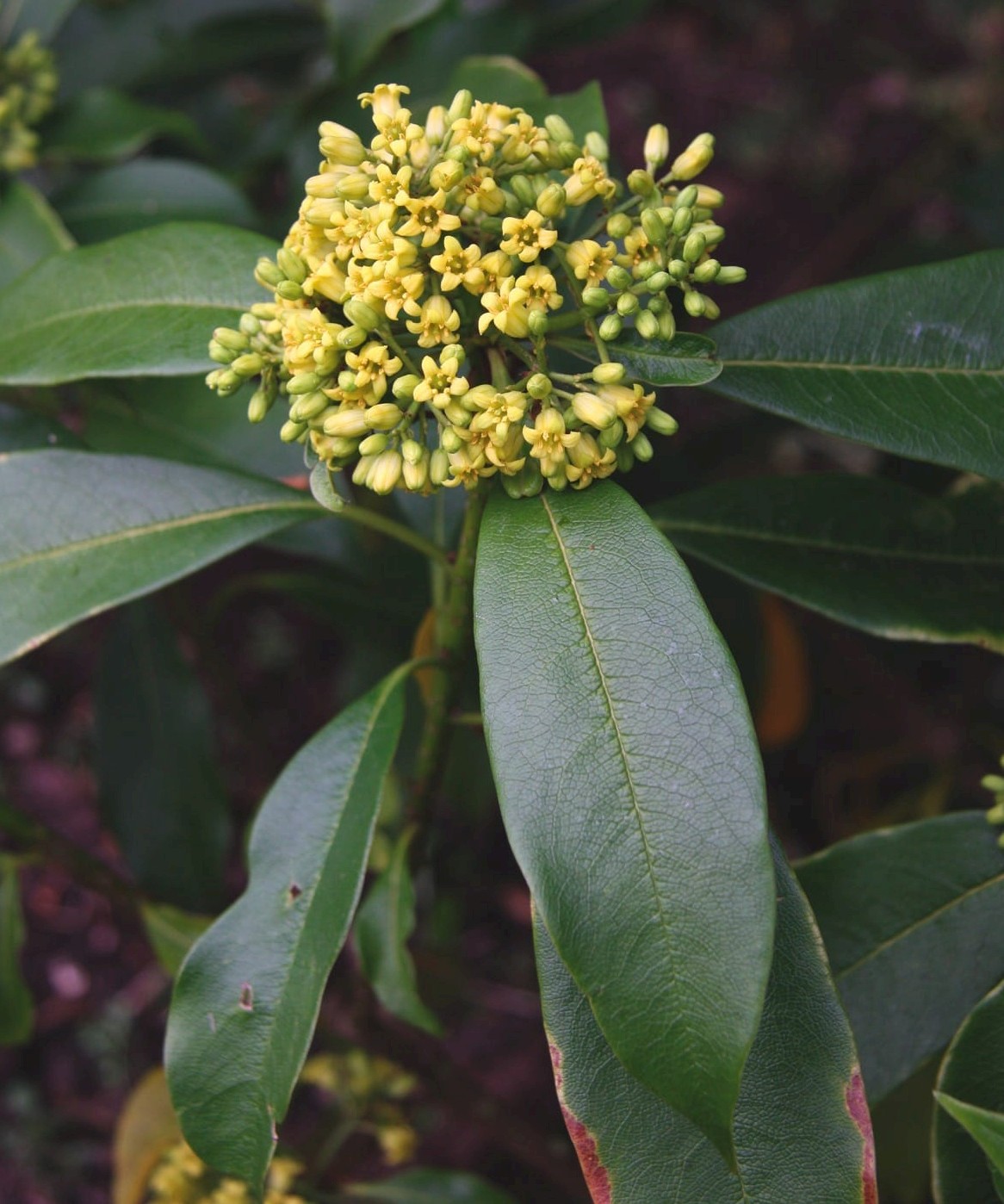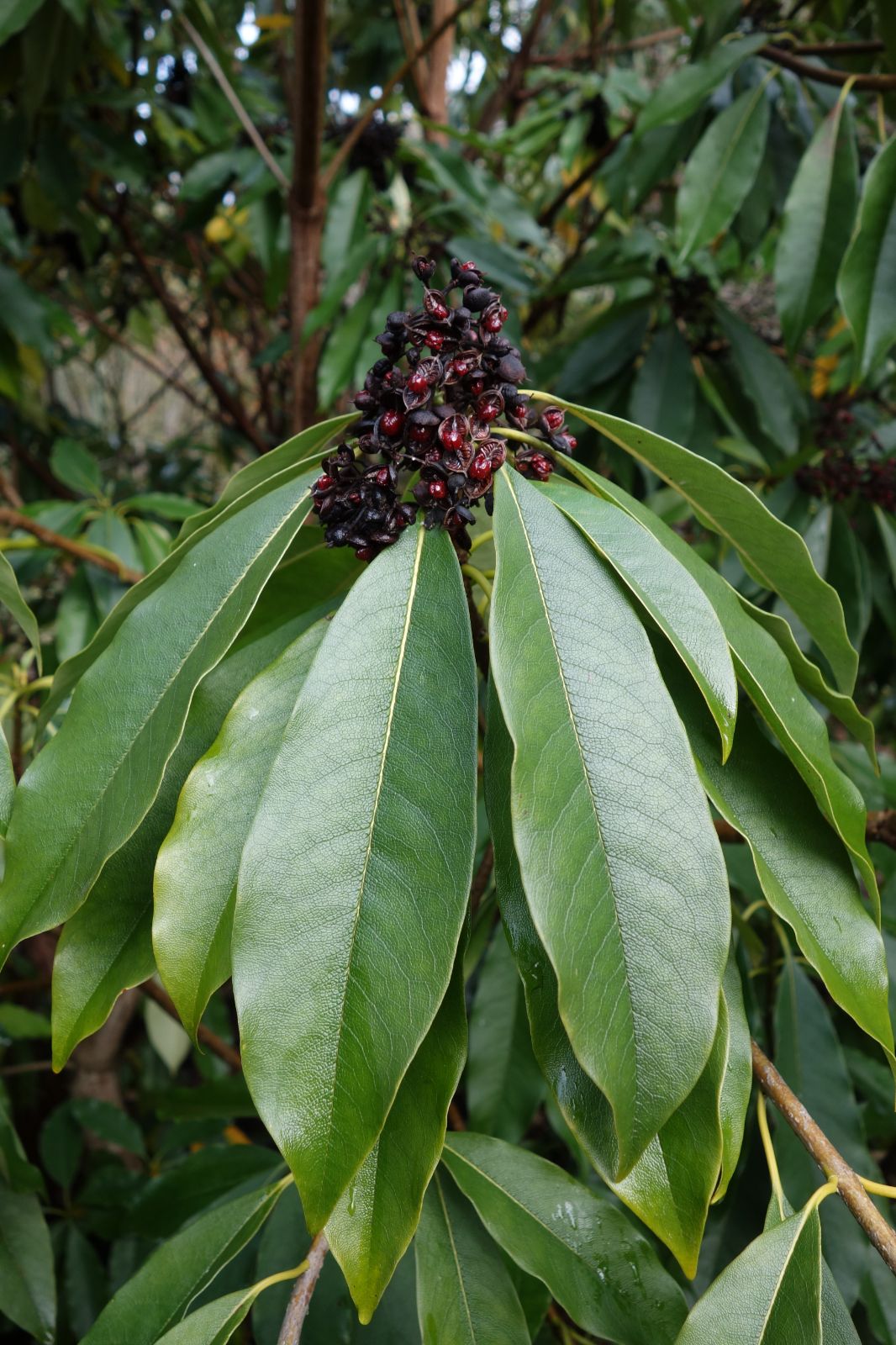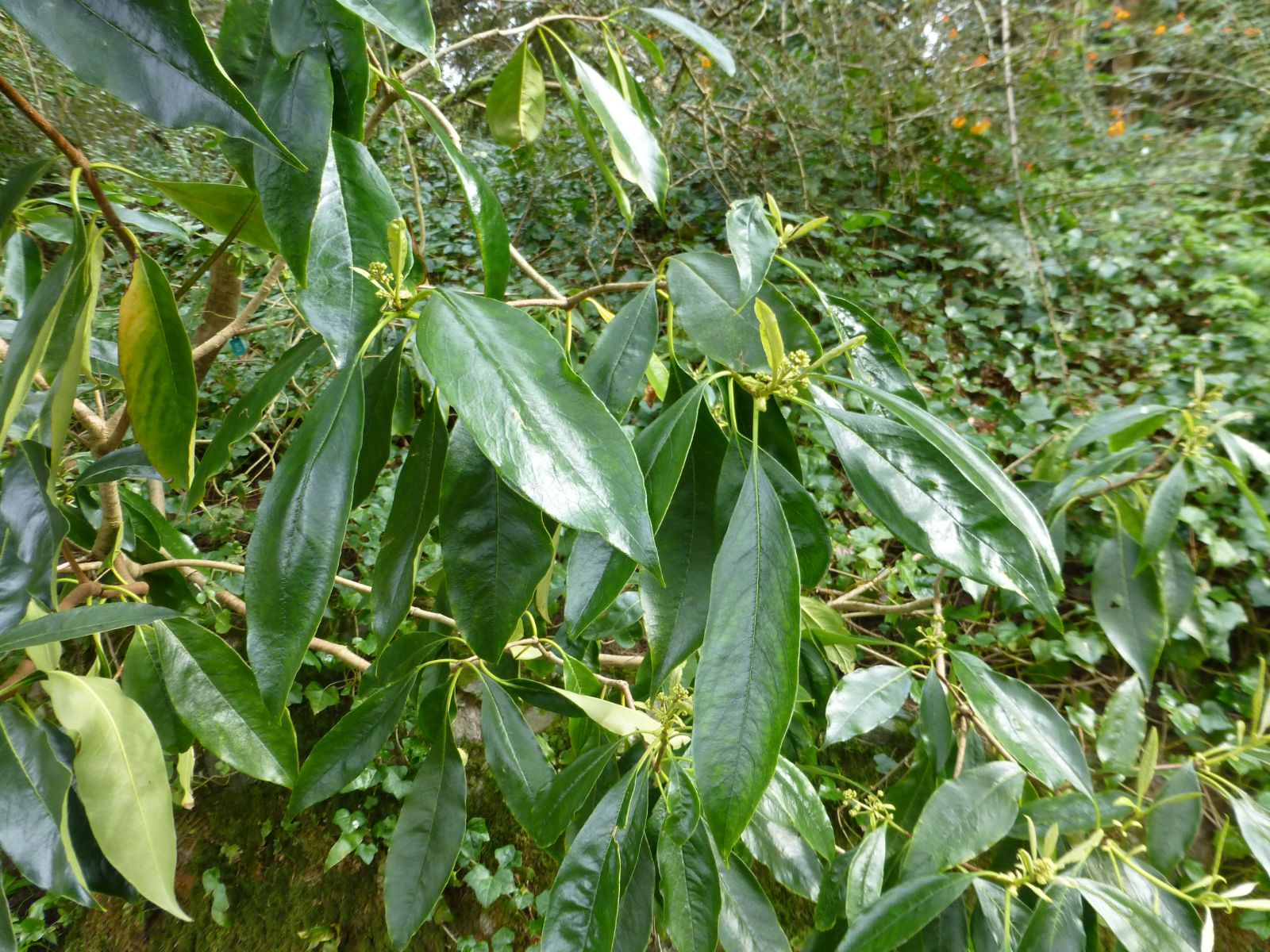Pittosporum daphniphylloides
Credits
Article from New Trees by John Grimshaw & Ross Bayton
Recommended citation
'Pittosporum daphniphylloides' from the website Trees and Shrubs Online (treesandshrubsonline.
Genus
Other taxa in genus
- Pittosporum adaphniphylloides
- Pittosporum bicolor
- Pittosporum brevicalyx
- Pittosporum buchananii
- Pittosporum colensoi
- Pittosporum cornifolium
- Pittosporum crassifolium
- Pittosporum dallii
- Pittosporum divaricatum
- Pittosporum eugenioides
- Pittosporum glabratum
- Pittosporum huttonianum
- Pittosporum patulum
- Pittosporum phillyreoides
- Pittosporum revolutum
- Pittosporum rigidum
- Pittosporum tenuifolium
- Pittosporum tobira
- Pittosporum undulatum
Shrub or small tree 2–5(–8) m. Branchlets stout and glabrous, becoming reddish brown with age. Leaves evergreen (biennial), clustered at the tips of branches, 10–20 × 4–8 cm, leathery, oblong or elliptic, upper surface dark green and glossy, lower surface pale green and glabrous, 9–12 primary veins on each side of the midrib, margins entire, apex acute or acuminate; petiole 1.5–3 cm long. Inflorescences in groups of three to seven, in leaf axils at branchlet apices; corymbose, 4–6 cm long, pubescent. Flowers hermaphrodite or unisexual; sepals free or connate at the base, margins ciliate; petals free, yellow, narrowly oblong and 0.6–0.8 cm long. Capsule globose and slightly compressed, 0.6–1 cm diameter, dehiscing by two valves. Seeds 10–23, red, though black when dry. Flowering March to June, fruiting June to December (China). Zhang et al. 2003c. Distribution CHINA: northern Guizhou, southwest Hubei, northwest Hunan, Sichuan; TAIWAN. Habitat Forest or thickets in ravines and on slopes and cliffs, between 500 and 2500 m asl. USDA Hardiness Zone 8. Conservation status Not evaluated. Illustration Zhang et al. 2003c; NT631. Cross-references B253 (as P. adaphniphylloides), K410. Taxonomic note Pittosporum daphniphylloides occurs as two varieties: var. daphniphylloides (leaf blade thin, seeds 10–15) in Taiwan, and var. adaphniphylloides (Hu & F.T. Wang) W.T. Wang (leaf blade thick, seeds 17–23) in China (Zhang et al. 2003c).
As Pittosporum adaphniphylloides this species was described by Bean (1976b), and plants so named are still to be found in cultivation. Pittosporum daphniphylloides var. adaphniphylloides, as it is now understood, is the mainland Chinese representative of the species, the nominate var. daphniphylloides coming from Taiwan. This has been collected on several occasions in recent years, perhaps first by the 1993 Edinburgh Taiwan Expedition (ETE 275), from which there are plants in the Scottish botanic gardens. Later collections include RWJ 9913 and BSWJ 6789, gathered by the Wynn-Joneses in northern Taiwan and offered by them through Crûg Farm Plants, Gwynedd. The species has handsome large leaves, and produces rounded panicles of abundant though individually small yellow flowers. When happy it can grow very rapidly, by as much as a metre a year (S. Hogan, pers. comm. 2008); this is most likely to be in areas with warm summers, so long as ample moisture is available.




